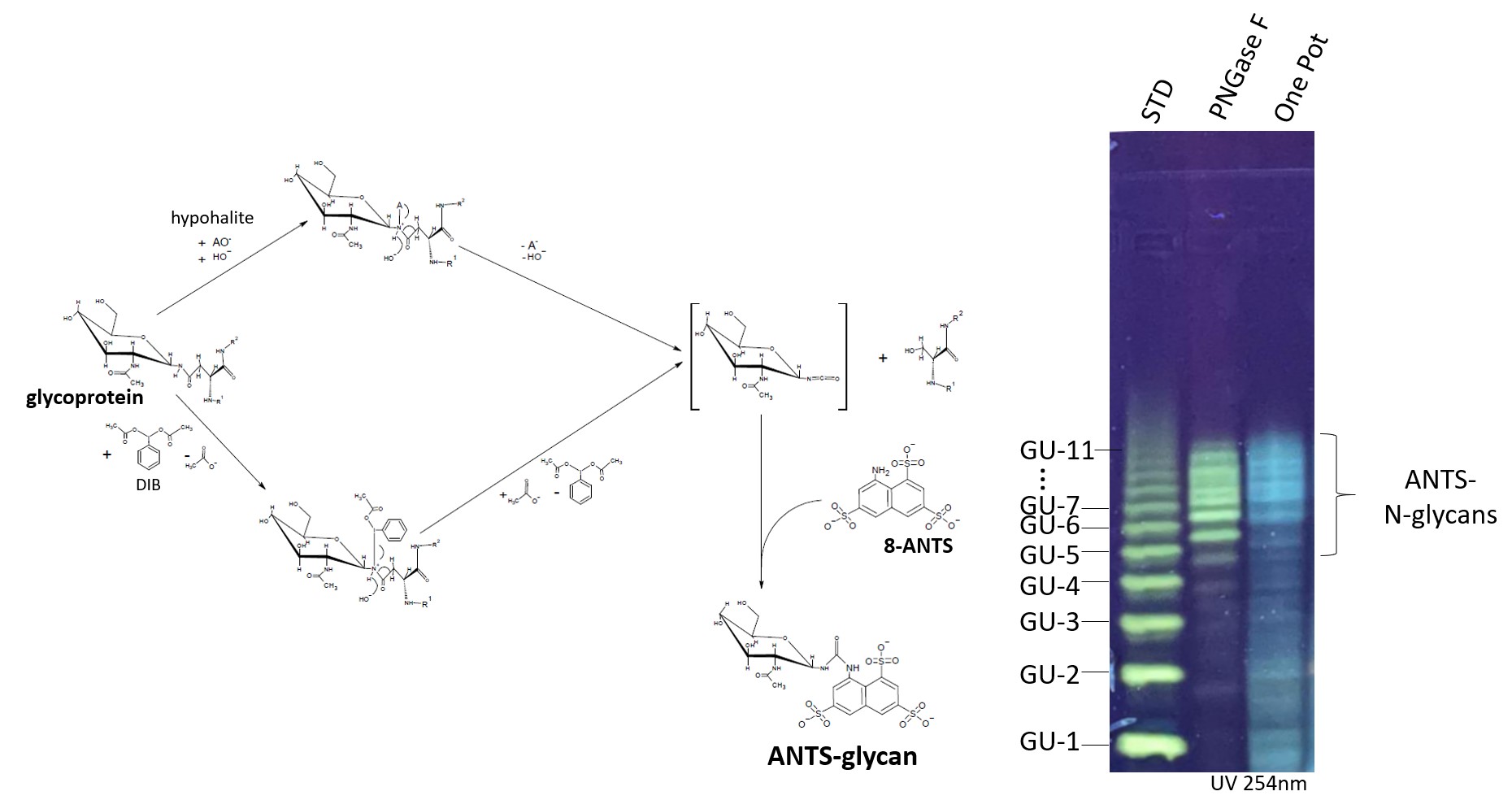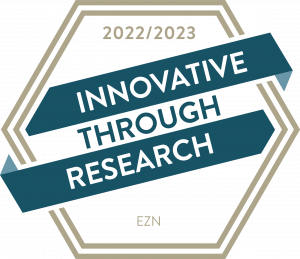Simultaneous release of glycans
// Chemical Analysis // Chemistry
Ref-Nr: 16994
Abstract
To ensure the safety of drug use, the determination of glycan structures is beneficial for the quality of biomolecules.background
Classical methods for the determination of glycan structures, such as the applied HPLC- and electrophoresis-based methods, are time-consuming due to the release and fluorescence labeling of the glycans. Enzymatic methods for glycan release can often take several hours. In addition, the release of protein-bound O-glycans requires the undesirable use of highly toxic substances.
Motivation
For in-process analysis of protein-bound glycans, a rapid and cost-effective sample preparation method is needed.Innovation / Solution
The present invention is intended to provide efficient and rapid release and labeling of glycans. According to the invention, this is achieved by releasing all types of glycans (N-, O-, protein O- and C-glycans) from a glycoprotein by reacting a glycoprotein in a container with a strong oxidizing agent under alkaline aqueous ambient conditions and with a fluorescent aromatic amine.Benefits
Faster generation of glycan structure data leads to significant time savings.
In situ labeling of glycans provides glycan structures with natural closed ring structure at the reducing end.
The release of glycans by less expensive chemicals instead of expensive enzymes leads to cost savings.
fields of application
The field of application is aimed at improving the quality of biomolecules in order to ensure the safe use of drugs. For this purpose, the determination of glycan structures, for example, is advantageous. The simultaneous release and fluorescence labeling of the glycans of a test glycoprotein could be demonstrated.You can close this window. You can find your search results in the previous window





